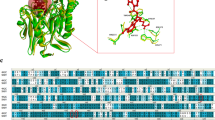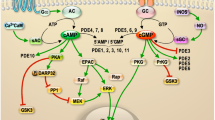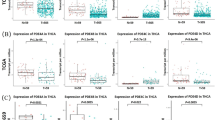Abstract
Aim:
To develop a homogeneous assay for high-throughput screening (HTS) of inhibitors of phosphodiesterase 10 (PDE10).
Methods:
Purified human PDE10 enzyme derived from E coli, [3H]-cAMP and yttrium silicate microbeads were used to develop an HTS assay based on the scintillation proximity assay (SPA) technology. This method was applied to a large-scale screening campaign against a diverse compound library and subsequent confirmation studies. Preliminary structure-activity relationship (SAR) studies were initiated through limited structural modifications of the hits.
Results:
The IC50 value of the control compound (papaverine) assessed with the SPA approach was comparable and consistent with that reported in the literature. Signal to background (S/B) ratio and Z' factor of the assay system were evaluated to be 5.24 and 0.71, respectively. In an HTS campaign of 71 360 synthetic and natural compounds, 67 hits displayed reproducible PDE10 inhibition, of which, 8 were chosen as the scaffold for structural modifications and subsequent SAR analysis.
Conclusion:
The homogeneous PDE10 SPA assay is an efficient and robust tool to screen potential PDE10 inhibitors. Preliminary SAR studies suggest that potent PDE10 inhibitors could be identified and developed through this strategy.
Similar content being viewed by others
Log in or create a free account to read this content
Gain free access to this article, as well as selected content from this journal and more on nature.com
or
References
Zaccolo M, Movsesian MA . cAMP and cGMP signaling cross-talk: role of phosphodiesterases and implications for cardiac pathophysiology. Circ Res 2007; 100: 1569–78.
Vezzosi D, Bertherat J . Phosphodiesterases in endocrine physiology and disease. Eur J Endocrinol 2011; 165: 177–88.
Chan S, Yan C . PDE1 isozymes, key regulators of pathological vascular remodeling. Curr Opin Pharmacol 2011; 11: 720–4.
Loughney K, Snyder PB, Uher L, Rosman GJ, Ferguson K, Florio VA . Isolation and characterization of PDE10A, a novel human 3′,5′-cyclic nucleotide phosphodiesterase. Gene 1999; 234: 109–17.
Soderling SH, Bayuga SJ, Beavo JA . Isolation and characterization of a dual-substrate phosphodiesterase gene family: PDE10A. Proc Natl Acad Sci U S A 1999; 96: 7071–6.
Fujishige K, Kotera J, Omori K . Striatum- and testis-specific phosphodiesterase PDE10A: isolation and characterization of a rat PDE10A. Eur J Biochem 1999; 266: 1118–27.
Hebb AL, Robertson HA, Denovan-Wright EM . Striatal phosphodiesterase mRNA and protein levels are reduced in Huntington's disease transgenic mice prior to the onset of motor symptoms. Neuroscience 2004; 123: 967–81.
Siuciak JA, McCarthy SA, Chapin DS, Fujiwara RA, James LC, Williams RD, et al. Genetic deletion of the striatum-enriched phosphodiesterase PDE10A: evidence for altered striatal function. Neuropharmacology 2006; 51: 374–85.
Siuciak JA, Chapin DS, Harms JF, Lebel LA, McCarthy SA, Chambers L, et al. Inhibition of the striatum-enriched phosphodiesterase PDE10A: a novel approach to the treatment of psychosis. Neuropharmacology 2006; 51: 386–96.
Rodefer JS, Murphy ER, Baxter MG . PDE10A inhibition reverses subchronic PCP-induced deficits in attentional set-shifting in rats. Eur J Neurosci 2005; 21: 1070–6.
Grauer SM, Pulito VL, Navarra RL, Kelly MP, Kelley C, Graf R, et al. Phosphodiesterase 10A inhibitor activity in preclinical models of the positive, cognitive, and negative symptoms of schizophrenia. J Pharmacol Exp Ther 2009; 331: 574–90.
Menniti FS, Chappie TA, Humphrey JM, Schmidt CJ . Phosphodiesterase 10A inhibitors: a novel approach to the treatment of the symptoms of schizophrenia. Curr Opin Investig Drugs 2007; 8: 54–9.
Schmidt CJ, Chapin DS, Cianfrogna J, Corman ML, Hajos M, Harms JF, et al. Preclinical characterization of selective phosphodiesterase 10A inhibitors: a new therapeutic approach to the treatment of schizophrenia. J Pharmacol Exp Ther 2008; 325: 681–90.
Coste H, Grondin P . Characterization of a novel potent and specific inhibitor of type V phosphodiesterase. Biochem Pharmacol 1995; 50: 1577–85.
Zhang JH, Chung TD, Oldenburg KR . A simple statistical parameter for use in evaluation and validation of high throughput screening assays. J Biomol Screen 1999; 4: 67–73.
Liang W, Liu G . Synthesis of mono- and di-fluorinated benzimidazoles. Chin J Chem 2011; 29: 983–90.
Meng T, Su HR, Binkert C, Fischli W, Zhou L, Shen JK, et al. Identification of non-peptidic neuromedin U receptor modulators by a robust homogeneous screening assay. Acta Pharmacol Sin 2008; 29: 517–27.
Liu Q, Zhang YY, Lu HL, Li QY, Zhou CH, Wang MW . Rhodanine derivatives as novel peroxisome proliferator-activated receptor gamma agonists. Acta Pharmacol Sin 2007; 28: 2033–9.
Acknowledgements
This study was supported in part by grants from H Lundbeck A/S and the Ministry of Science and Technology of China (2009ZX09302-001, 2012ZX09304011 and 2013ZX09507002), Shanghai Science and Technology Development Fund (11DZ2292200). We are indebted to to Dale E MAIS for critical review of this manuscript.
Author information
Authors and Affiliations
Corresponding author
Rights and permissions
About this article
Cite this article
Li, Qy., Xu, Mk., Liu, G. et al. Discovery of novel PDE10 inhibitors by a robust homogeneous screening assay. Acta Pharmacol Sin 34, 1116–1120 (2013). https://doi.org/10.1038/aps.2013.25
Received:
Accepted:
Published:
Issue date:
DOI: https://doi.org/10.1038/aps.2013.25
Keywords
This article is cited by
-
Application of chemical biology in target identification and drug discovery
Archives of Pharmacal Research (2015)



